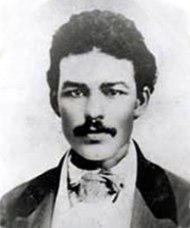The expert testifies, “He is mulatto.”
State v. Asa Jacobs, 51 N.C. 284 (1859).
Asa Jacobs was indicted in Brunswick County, as a free negro, for carrying firearms.
In the lower court, the State called a certain Pritchett to give an opinion on Jacobs’ ancestry. He testified that he had known Jacobs a long time, but had never seen any of Jacobs’ ancestors, and knew nothing of them by reputation. Jacobs’ lawyer objected that Pritchett’s lack of actual knowledge disqualified him from rendering an opinion on whether Jacobs was a free negro. The court ruled that Pritchett could answer questions to establish whether he was qualified to testify as an expert.
Pritchett then stated that he was a planter and had been an owner and manager of slaves for more than twelve years; that “he had paid much attention to and had had much observation of the effects of the intermixture of negro or African blood with the white and Indian races;” and that from such attention and observation, he was well satisfied that he could distinguish between the descendants of a negro and a white person and the descendants of a negro and Indian; and further, that he could also say whether a person was full African, or had more or less than half African “blood” in him, and whether the cross or intermixture was white or Indian. On this basis, Pritchett was admitted to testify and stated his opinion that Jacobs was a mulatto – that is, half African and half white. Jacobs’ counsel excepted to the admission of this evidence, and upon Jacobs’ conviction, appealed to the Supreme Court.
The Court noted that even a common observer can detect, from outward appearance, the “intermixture of the white and black races;” it is not a matter of science or skill. Nonetheless, it by no means follows that the ability to ascertain the extent of “negro blood” is not so. “On the contrary, we believe that it would often require an eye rendered keen, by observation and practice, to detect, with any approach to certainty, the existence of any thing less than one-fourth of African blood in a subject.” North Carolina law defined a free negro as one who is “descended from negro ancestors to the fourth generation inclusive, though one ancestor of each generation may have been a white person.” He may, therefore, be a person who is only a sixteenth African. The ability to detect “the infusion of so small a quantity of negro blood in one, claiming the privilege of a white man, must be a matter of science,” and, therefore, subject to the testimony of an expert. Pritchett, the court determined, proved that he possessed the necessary qualification to testify as such.
